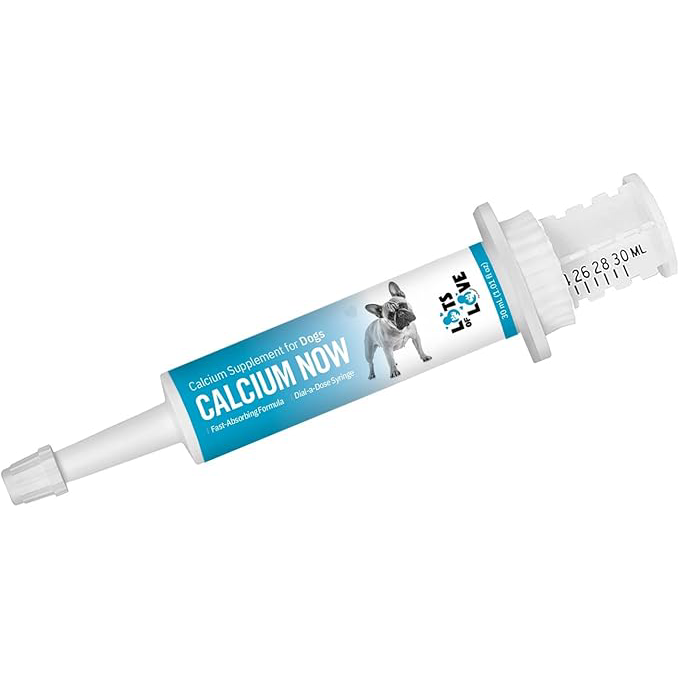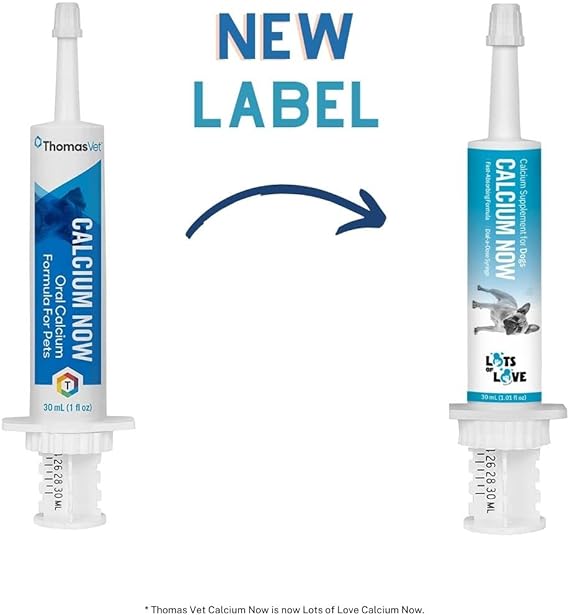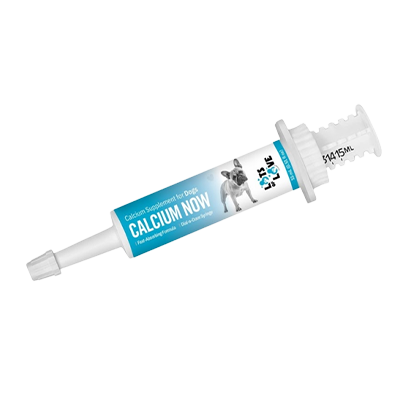Eclampsia in dogs (milk fever, hypocalcemia, or puerperal tetany) is a life-threatening condition associated with a drop in blood calcium levels. In most cases, this condition develops in nursing dogs weeks after giving birth. Most commonly, eclampsia occurs one to five weeks after giving birth when the mother is producing the most milk. Although rare, it can also occur in pregnant dogs or during whelping.
Causes of Eclampsia in Dogs
Eclampsia occurs most often in small-breed dogs with large litters due to the high milk demand of the puppies. Shih Tzus, Chihuahuas, Miniature Poodles, Miniature Pinschers, Pomeranians, and other small breeds are at increased risk for this condition. Dogs with their first litters are also at increased risk. It most commonly occurs in female dogs shortly after giving birth (within 1-4 weeks postpartum), although it can also occur during late pregnancy or lactation.
Eclampsia is caused by a lack of calcium within the mother's body, so she is unable to meet the calcium demands to provide for her puppies. Various reasons for this deficiency in calcium include:
- Producing milk to nurse her puppies
- Loss of calcium from the mother to the developing fetal skeletons
- An underactive/diseased parathyroid gland (the gland that controls the body's calcium levels)
- Calcium supplementation during pregnancy - Giving the mom too much calcium during pregnancy can suppress parathyroid hormone production. When the mother gives birth and her milk comes in, the demand for calcium suddenly increases and the parathyroid gland isn't able to respond quickly enough to meet her calcium needs
- An insufficient diet/poor nutrition during pregnancy
- Fast Growth Rate of Puppies: Puppies grow rapidly during the first weeks of life, increasing their milk intake. This rapid growth further intensifies the demand for the mother's calcium stores.
Symptoms of Eclampsia
Symptoms of eclampsia in dogs typically appear within the first 40 days after giving birth. If left untreated, eclampsia in dogs can even lead to death. Clinical signs may vary based on the severity of the condition, but can include:
- Weakness
- Tremors
- Restlessness/nervousness
- Panting
- Change in behavior
- Rapid, heavy breathing
- Disorientation
- Vomiting
- Diarrhea
- Incoordination/difficulty walking
- Sensitivity to sound, light, and touch
- Tetany (entire body goes stiff)
- Hyperthermia (body temperature rises)
- Seizures
- Coma
- Dilated Pupils
- Muscle Rigidity
Diagnosis of Eclampsia
If you suspect your dog has eclampsia, you should contact your veterinarian immediately. Your vet will ask about your dog's medical history, as well as her diet, lifestyle, and symptoms. To diagnose eclampsia in dogs, veterinarians often run a variety of standard tests that may include:
- Physical exam
- Serum chemistry profile
- Blood test to evaluate total serum calcium concentration (a concentration less than 7 mg/dL is a confirmation of eclampsia)
- Electrocardiogram
- Additional Laboratory Tests
- Diagnostic Imaging
- Clinical Signs
Treating Eclampsia in Dogs
Treatment for eclampsia in dogs requires IV administration of calcium until the mom is able to maintain her calcium levels. Intravenous calcium must be administered slowly to prevent complications like cardiac arrest. Heart rate is usually monitored during administration of calcium to avoid bradycardia (slow heart rate) or arrhythmias (irregular heartbeat).
If a high fever is present, your vet may give your dog a cool bath to help lower body temperature back to normal. Other symptoms, such as seizures, may require treatment as well. Low blood sugar or low blood magnesium levels may require supplementation.
Your veterinarian will advise preventing the puppies from nursing until the mom's calcium levels have stabilized. A milk replacer can be offered to the puppies during this time.
After the mom is stable, your vet may suggest giving her oral calcium supplements until the puppies are weaned. Her calcium levels will need to be monitored throughout the nursing period. Your vet may advise weaning the puppies as early as possible.
If your dog is showing signs of eclampsia, you should contact your vet immediately and prevent the puppies from nursing. If treated promptly, there's a good chance that your dog will recover quickly.
Preventing Eclampsia in Future Litters
Once a dog has had eclampsia, she will likely have it with future litters if preventive steps are not taken.
To help prevent eclampsia, the following steps can be taken:
- Provide a high-quality, nutritionally balanced diet with a proper calcium and phosphorus ratio during pregnancy and lactation. The optimal ratio of calcium to phosphorus is 1.2 to 1
- It's often recommended to give oral calcium supplementation to the mom immediately after whelping and continuing throughout lactation. This is especially important during peak milk production
- Providing food and water as often as desired during lactation can also help prevent eclampsia.
- Calcium supplementation should be avoided during pregnancy unless otherwise advised by your veterinarian. This is because calcium supplementation can affect the body's ability to regulate calcium, which increases the risk of developing eclampsia. Knowing when to give calcium supplements to dogs (and when not to) is essential
- The puppies may need to be supplemented with a milk replacer early in lactation, and they should be weaned as early as possible.
- Avoid Stress and Provide Support
- Education and Awareness can also prevent eclampsia.
Lots of Love Pet Products - Calcium Now
Calcium Now is a fast-absorbing, oral calcium formula for dogs and cats showing signs of calcium deficiency, including those showing signs of eclampsia. It contains three forms of calcium to ensure it is easily and rapidly absorbed, making it ideal for pets that require a quick dose of calcium. It can provide supplemental calcium to animals during whelping and support milk production after whelping. Learn more about the ingredients in Calcium Now and how they work together to deliver a wide variety of benefits!
Eclampsia is a concerning, life-threatening condition with scary symptoms. Recognizing the signs and getting immediate treatment can help keep your dog and her puppies safe and healthy!
You can buy this online at our Amazon store.

 DOG HEALTH SUPPLEMENTS
DOG HEALTH SUPPLEMENTS DOG DIGESTIVE SUPPLEMENTS
DOG DIGESTIVE SUPPLEMENTS EYE & EAR DROPS
EYE & EAR DROPS SKIN & COAT SUPPLEMENTS
SKIN & COAT SUPPLEMENTS CAT SUPPLEMENTS
CAT SUPPLEMENTS


